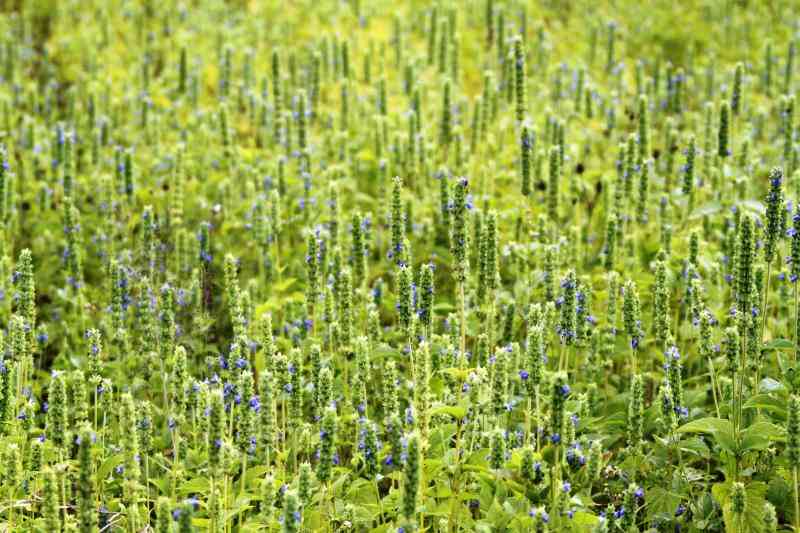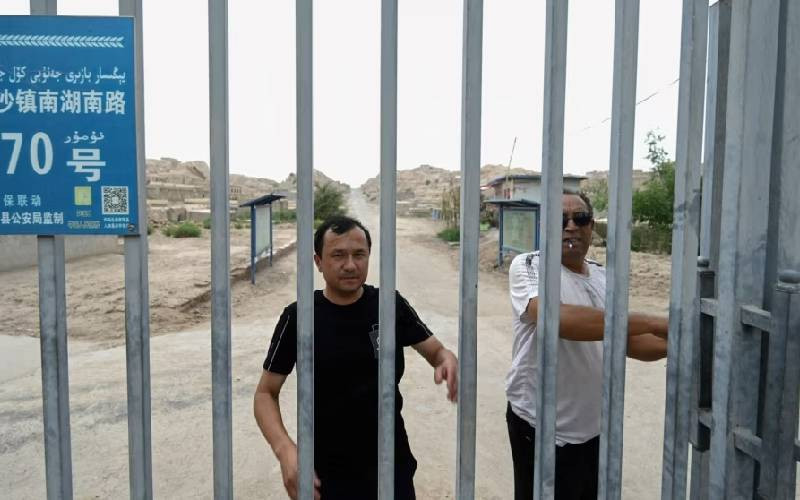Just like their counterparts in Nyanza, some farmers in Nyeri have been hit by the chia seed wave. Florence Wacuka, 52, is one of the converted farmers.
Wacuka, who lives in Sagana Settlement Scheme in Mathira Constituency, Nyeri County, has set aside an eighth of her farm to try out experimental crops. One of them being chia.
“I enjoy trying out new crops, and that is how I ended up growing this new crop that many people are not aware of,” Wacuka says.
She was introduced to chia seeds by a friend David Kimondo, a seasoned crop farmer in Kieni.
She says although the veteran farmer introduced her to several exotic plants, growing chia seeds has proved to be the most rewarding venture.
Rewarding venture
“I have been told this crop is originally from South America, has a ready market because of it’s numerous health benefits. I have tasted them myself and I have seen an overall improvement in my health.”
On a visit to her farm, at first sight, it appears as if invaded by weeds.
“My neighbours often laugh at me when they pass by my farm because it looks like I am growing weeds, but they do not understand that this crop is my gold,” Wacuka says.
For the few years she has grown them, Wacuka says the crops have not disappointed and she highly recommends them to any farmer who wants guaranteed returns at minimal stress.
According to Wacuka, growing and tending to chia plants is not labour-intensive.
“I set aside 15 kilos of seeds for planting every season, I simply ensure my land is well tilled and watered. I plant the seeds depending on how close I want the chia to grow. They rarely have weeds,” she says.
Chia seeds can grow in a variety of soil types including well-drained to moderately fertile soils.
They also need plenty of moisture for seedling development.
“They often germinate within seven days, after that, I water them once a week, for a month, by which time they grow to about 30cm in height,” Wacuka says.
Stay informed. Subscribe to our newsletter
Because the plants grow so close to each other and form a canopy, they essentially choke off any weeds and this means they do not need any weeding.
“If I notice any weeds I prefer using my hands to pull them out because I do not want to spray any chemicals that might be absorbed by the seeds,” she says.
Chia leaves have repellant properties against insects, so there are no pests that attack the plants while they are on the farm. Chia plants are ready for harvest after four months. At this point, the labour intensive work of separating the seeds from their pods begins.
Wacuka employs between five to seven people during harvesting to assist her carefully separate the chia seeds from their pods.
“To harvest the seeds, you must use a sharp knife and cut off just the head which carries the pods, these are what we then put in a nylon sack,” she says.
Harvesting the seeds is tedious.
“You must protect them within the pod until they are safely in the sack, after which I then have to thrash them either by hand or with a stick by beating the sack to separate the seeds from the pods,” she says. After the thrashing, then comes winnowing.
“It is a painstaking job that often takes me weeks to complete but at the end of it, I am always proud of the result as I can produce about 30kgs of chia seeds from my eighth of an acre,” she says.
She then sells the seeds to her friend Kimondo who buys them at Sh250 per 1kg.
Wacuka has planted the chia seeds for three seasons in the past two years and admits that she has enjoyed the fruits of her labour so far. She is now recruiting more farmers.
 The Standard Group Plc is a
multi-media organization with investments in media platforms spanning newspaper
print operations, television, radio broadcasting, digital and online services. The
Standard Group is recognized as a leading multi-media house in Kenya with a key
influence in matters of national and international interest.
The Standard Group Plc is a
multi-media organization with investments in media platforms spanning newspaper
print operations, television, radio broadcasting, digital and online services. The
Standard Group is recognized as a leading multi-media house in Kenya with a key
influence in matters of national and international interest.
 The Standard Group Plc is a
multi-media organization with investments in media platforms spanning newspaper
print operations, television, radio broadcasting, digital and online services. The
Standard Group is recognized as a leading multi-media house in Kenya with a key
influence in matters of national and international interest.
The Standard Group Plc is a
multi-media organization with investments in media platforms spanning newspaper
print operations, television, radio broadcasting, digital and online services. The
Standard Group is recognized as a leading multi-media house in Kenya with a key
influence in matters of national and international interest.








